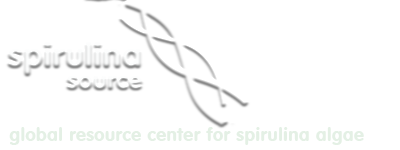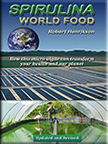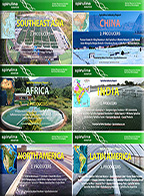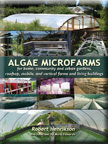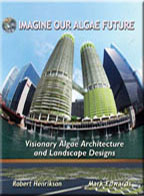REFERENCES AND ABSTRACTS BY HEALTH CATEGORY
Spirulina scientific reference library. Over 100 references covering 45 years of international research.
Click on PDF Download button for free pdf file.
![]() Spirulina (Arthrospira): An Edible Microorganism. by Martha Sanchez et al. Universitas Scientarium Pontifica Universidad Javeriana. Vol 8,N1; 7:24. 2003. Colombia.
Spirulina (Arthrospira): An Edible Microorganism. by Martha Sanchez et al. Universitas Scientarium Pontifica Universidad Javeriana. Vol 8,N1; 7:24. 2003. Colombia.
Spirulina is a photosynthetic, filamentous, helical-shaped, multicellular and green-blue microalga. The two most important species of which are Spirulina maxima and Spirulina platensis. For these microorganisms cell division occurs by binary fission. Since this material contains chlorophyll a, like higher plants, botanists classify it as a microalgae belonging to Cyanophyceae class; but according to bacteriologists it is a bacteria due to its prokaryotic structure. Before Columbus, Mexicans (Aztecs) exploited this microorganism as human food; presently, African tribes (Kanembu) use it for the same purpose. Its chemical composition includes proteins (55%-70% ), carbohydrates (15%-25%), essential fatty acids (18%), vitamins, minerals and pigments like carotenes, chlorophyll a and phycocyanin. The last one is used in food and cosmetic industries. Spirulina is considered as an excellent food, lacking toxicity and having corrective properties against viral attacks, anemia, tumor growtll and malnutrition. It has been reported in literature that the use of these microalgae as animal food supplement implies enhancement of the yellow coloration of skin and eggs yolk in poultry and flaniingos, growth acceleration, sexual maturation and increase of fertility in cattle.
Spirulina – Production & Potential.
by Ripley D. Fox. 1996. Pub. by Editions Edisud, La Calade, R.N.7, 13090 Aix-en-Province, France. Tel: 42216144; Fax: 42215620.
This book gives the most complete and practical information on growing spirulina. It should be consulted by health authorities and development decisionmakers, by spirulina growers and it can be used as a teaching text in universities. Dr. Fox explains the history of the cyanobacteria, Arthrospira platensis, popularly known as the blue-green algae spirulina… its composition, growth requirements and methods for managing the culture (from village level artisanal production to large scale industrial farms). Health benefits are described, with emphasis on its usefulness for combatting malnutrition. Giant farms using seawater are proposed for providing spirulina as a food supplement for the millions of malnourished children living today. Dr. Fox sees spirulina as a million dollar commodity in the near future.
Algoculture: Spirulina, hope for a hungry world.
by Ripley D. Fox. 1986. Pub. by Edisud, Aix-en-Province, France (in French).
![]() Current knowledge on potential health benefits of spirulina.
Current knowledge on potential health benefits of spirulina.
by Amha Belay, Yoshimichi Ota, Kazuyuki Miyakawa and Hidenori Shimamatsu. 1993. Pub. in Journal of Applied Phycology, 5:235-241. USA.
Spirulina is a microscopic filamentous alga that is rich in proteins, vitamins, essential amino acids, minerals and essential fatty acids like gammma-linolenic acid (GLA). It is produced commercially and sold as a food supplement in health food stores around the world. Up to very recently, the interest in Spirulina was mainly in its nutritive value. Currently, however, numerous people are looking into the possible therapeutic effects of Spirulina. Many pre-clinical studies and a few clinical studies suggest several therapeutic effects ranging from reduction of cholesterol and cancer to enhancing the immune system, increasing intestinal lactobacilli, reducing nephrotoxicity by heavy metals and drugs and radiation protection. This paper presents a critical review of some published and some unpublished data on therapeutic effects of spirulina.
Large scale nutritional supplementation with spirulina alga.
by C.V. Seshadri. 1993. All India Coordinated Project on Spirulina. Shri Amm Murugappa Chettiar Research Center (MCRC) Madras, India.
A one year feeding program with 5,000 pre-school children showed a symptom of Vitamin A deficiency, “Bitot’s spot”, decreased from 80% to 10%. These rural children near Madras consumed 1 gram of spirulina a day for at least 150 days. This small amount provided the daily requirement of beta carotene (Vitamin A) which can help prevent blindness and eye diseases. In another study with 400 school children, a daily dose of beta carotene from spirulina increased their Vitamin A status to the same level as those administered pure Vitamin A. Spirulina was given to children in a unique way: extruded noodles, sweetened with sugar to preserve the beta carotene. Called “Spiru-Om”, it was well accepted by the children. This project was sponsored by the Indian Government.
Microalgae as Food and Supplement
by Robert A. Kay. 1991. In Critical Reviews in Food Science and Nutr. 30(6):555-573. Pub. by CRC Press. USA.
The microalgae chlorella, dunaliella and scenedesmus, and the cyanobacteria spirulina and aphanizomenon flos-aquae, are being used as nutrient dense foods and sources of fine chemicals. They have significant amounts of lipid, protein, chlorophyll, carotenoid, vitamins, minerals, and unique pigments. They may also have potent probiotic compounds that enhance health. Their historical and current use is reviewed.
Spirulina: a model for microalgae as human food.
by Alan Jassby. 1988. In Algae and Human Affairs. edited by Lembi and Waaland. Pub. by Cambridge Univ. Press, Cambridge, UK.
This is an evaluation of the food potential of microalgae using proven technology. Numerous examples of traditional use of inland microalgae are cited from more than 15 countries. The nutritional aspects of spirulina stand out. Spirulina’s safety for human consumption, food applications, economic and environmental aspects, world spirulina production, production costs and therapeutic applications are reviewed. How microalgae can address world hunger problems is addressed with mention of harvesting wild algae and village scale production systems.
Spirulina, the edible organism.
by Orio Ciferri. 1983. In Microbiological Reviews, Dec 1983. 551-578. Italy.
In depth review of the history, biology, chemistry and potential of Spirulina as a human and animal food. Subjects: taxonomy, physiology, biochemistry, chemical composition, production, nutrition and toxicology, prospects for use as a food source.
